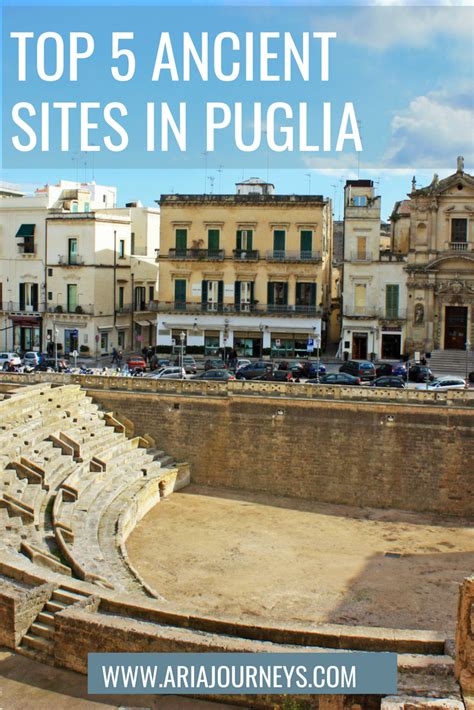Puglia's Rich History: Plan Your Cultural Trip
Puglia, the heel of Italy's boot, boasts a captivating history that unfolds in its charming towns, ancient ruins, and breathtaking landscapes. This region, often overlooked in favor of more famous Italian destinations, offers a unique and rewarding cultural experience for travelers seeking something beyond the typical tourist trail. From its prehistoric roots to its significant role in shaping modern Italy, Puglia's story is one of resilience, innovation, and enduring beauty. Planning a cultural trip here is an adventure in itself, promising a journey through millennia of fascinating history.
What Makes Puglia Historically Significant?
Puglia's historical significance stems from its strategic geographical location. Its coastline, facing the Adriatic and Ionian Seas, has attracted settlers and invaders for centuries. This constant interaction of cultures has left an indelible mark, creating a unique blend of architectural styles, culinary traditions, and artistic expressions. From ancient Greek settlements to Norman castles and Baroque churches, Puglia's landscape is a living testament to its layered past.
What are the key historical periods that shaped Puglia?
Puglia's rich tapestry of history is woven from several key periods:
-
Prehistoric and Ancient Times: Evidence suggests human habitation in Puglia dates back to the Paleolithic era. The region later flourished under Greek colonization, with cities like Taranto and Lecce becoming important centers of Greek culture in southern Italy.
-
Roman Domination: After the Greek era, Puglia fell under Roman rule, becoming an integral part of the Roman Empire. Roman influence is visible in the region's infrastructure, including remnants of roads, aqueducts, and amphitheaters.
-
Byzantine and Norman Periods: Following the fall of the Roman Empire, Puglia experienced Byzantine rule, followed by the arrival of the Normans in the 11th century. This period saw the construction of numerous castles and cathedrals, showcasing a fascinating blend of Byzantine and Norman architectural styles.
-
Aragonese and Angevin Rule: The Angevin and Aragonese dynasties further shaped Puglia's history and culture, leaving their mark on the region's architecture and political landscape.
-
Modern Era: Puglia's history continues into the modern era, marked by its role in the unification of Italy and its ongoing evolution as a vibrant cultural center.
Exploring Puglia's Historical Gems: Must-See Sites
Planning your cultural trip to Puglia requires careful consideration of its diverse historical offerings. Here are some must-see sites:
What are some of the best-preserved ancient ruins in Puglia?
-
Egnazia: This ancient city, located near Fasano, offers a remarkable glimpse into Roman life, with its well-preserved ruins, including a forum, amphitheater, and necropolis.
-
Canosa di Puglia: Another significant archaeological site, Canosa boasts fascinating Roman and pre-Roman ruins, showcasing the region's long and rich history.
What are the most impressive castles and cathedrals to visit?
-
Castel del Monte: This iconic octagonal castle, built by Frederick II, is a UNESCO World Heritage site and a testament to the architectural genius of the Holy Roman Empire.
-
The Cathedrals of Trani, Bari, and Lecce: Each of these cathedrals showcases a distinct architectural style reflecting the region's rich historical evolution. Trani Cathedral's Romanesque architecture is particularly stunning, while Lecce's Baroque cathedral is breathtaking in its detail.
What are the best towns and cities for experiencing Puglia's history?
-
Lecce: Known as the "Florence of the Baroque," Lecce is a city overflowing with stunning Baroque architecture, intricate carvings, and a vibrant cultural scene.
-
Matera (Basilicata, bordering Puglia): Although technically in Basilicata, Matera's unique "Sassi" – cave dwellings – are a short trip from Puglia and are a significant part of Southern Italy's history and a UNESCO World Heritage site. Their history stretches back to prehistoric times.
-
Ostuni: This "White City" perched on a hilltop offers stunning views and a charming historic center filled with whitewashed buildings and narrow, winding streets. Its history is equally intriguing, with influences from various eras.
Planning Your Trip: Tips and Recommendations
To maximize your cultural experience in Puglia, consider these tips:
How long should I spend in Puglia to properly experience its history?
At least 7-10 days are recommended to allow for thorough exploration of the region's key historical sites and cities.
What's the best time of year to visit?
Spring and autumn offer pleasant weather, fewer crowds, and a vibrant atmosphere.
What are some recommended local experiences to enhance my understanding of Puglia's history?
Consider taking guided tours of archaeological sites and historical buildings. Participate in cooking classes to learn about regional cuisine and its historical evolution. Visit local museums to deepen your understanding of Puglia's artistic heritage. Engaging with local artisans and craftsmen offers insight into enduring traditions.
Puglia's rich history is a treasure waiting to be discovered. By planning your cultural trip strategically, you'll embark on an unforgettable journey through time, immersing yourself in the region's captivating past and appreciating its enduring legacy.

